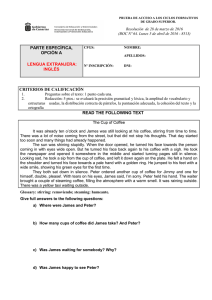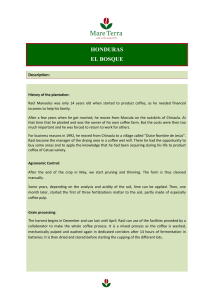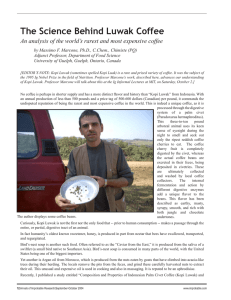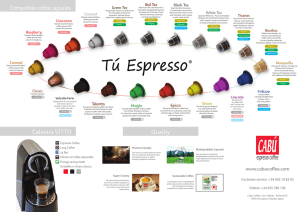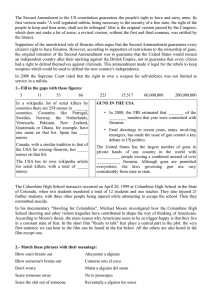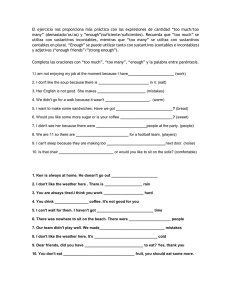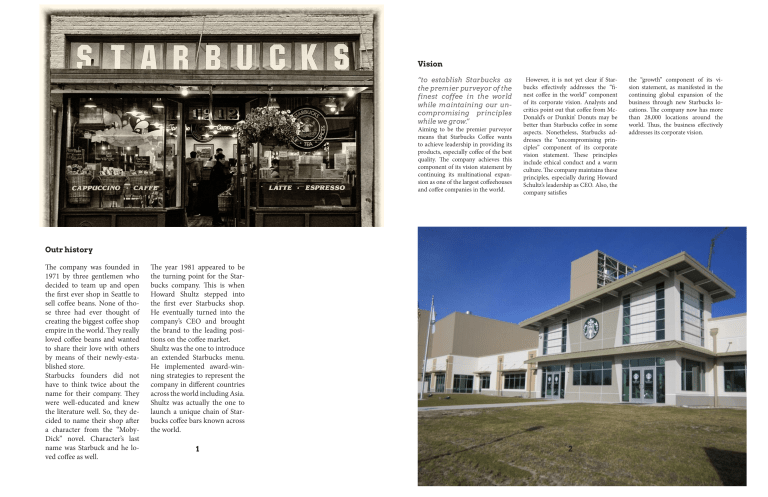
Vision “to establish Starbucks as the premier purveyor of the finest coffee in the world while maintaining our uncompromising principles while we grow.” Aiming to be the premier purveyor means that Starbucks Coffee wants to achieve leadership in providing its products, especially coffee of the best quality. The company achieves this component of its vision statement by continuing its multinational expansion as one of the largest coffeehouses and coffee companies in the world. However, it is not yet clear if Starbucks effectively addresses the “finest coffee in the world” component of its corporate vision. Analysts and critics point out that coffee from McDonald’s or Dunkin’ Donuts may be better than Starbucks coffee in some aspects. Nonetheless, Starbucks addresses the “uncompromising principles” component of its corporate vision statement. These principles include ethical conduct and a warm culture. The company maintains these principles, especially during Howard Schultz’s leadership as CEO. Also, the company satisfies Outr history The company was founded in 1971 by three gentlemen who decided to team up and open the first ever shop in Seattle to sell coffee beans. None of those three had ever thought of creating the biggest coffee shop empire in the world. They really loved coffee beans and wanted to share their love with others by means of their newly-established store. Starbucks founders did not have to think twice about the name for their company. They were well-educated and knew the literature well. So, they decided to name their shop after a character from the “MobyDick” novel. Character’s last name was Starbuck and he loved coffee as well. The year 1981 appeared to be the turning point for the Starbucks company. This is when Howard Shultz stepped into the first ever Starbucks shop. He eventually turned into the company’s CEO and brought the brand to the leading positions on the coffee market. Shultz was the one to introduce an extended Starbucks menu. He implemented award-winning strategies to represent the company in different countries across the world including Asia. Shultz was actually the one to launch a unique chain of Starbucks coffee bars known across the world. 1 2 the “growth” component of its vision statement, as manifested in the continuing global expansion of the business through new Starbucks locations. The company now has more than 28,000 locations around the world. Thus, the business effectively addresses its corporate vision. Letter to the shareholders Dear Shareholders, Starbucks was founded in 1971 and over the past five decades has built one of the world’s most admired and trusted brands around a mission that celebrates the joy of human connection and the romance of all things coffee. It is a privilege to share with you some of the extraordinary events and milestones that have shaped this past year for Starbucks Coffee Company. I believe in the power of a team, and it is an honor to work with Starbucks world-class leadership team. Together, we understand our responsibility to lead our company into the future by remaining true to our mission to inspire and nurture the human spirit, while at the same time reimagining the future of Starbucks. We are now writing our next chapter of growth and value creation for Starbucks partners, customers and our shareholders. And we continue to build the company by further elevating the Starbucks Experience, showing our love for all things coffee, and remaining true in our constant pursuit of doing good. It’s amazing to consider that each week we serve 100 million customer occasions in nearly 30,000 stores around the world. And at the center of creating that warm and welcoming Starbucks experience is a diverse group of more than 350,000 partners who proudly wear the green apron. Over the past two years, we have set the foundation for our next chapter of growth. In fiscal year 2018, we surpassed 29,000 stores in 78 markets around the world. We reached a record net revenue in fiscal year 2018 of $24.7 billion, up 10 percent over the prior year, and grew non-GAAP EPS1 by 17 percent to $2.42 per share. We were pleased with the trajectory of the business as we closed fiscal year 2018, reaffirming our plans for sustainable growth while challenging the status quo, elevating the customer experience, investing in and empowering our partners, operating with discipline and adapting with agility. As we look ahead to the future, we have a plan to not only generate long-term growth and shareholder value for the company, but to continue to build a brand that creates an emotional connection with our partners and customers. We streamlined the business around several initiatives: global retail market alignment, business simplification, the execution of our Global Coffee Alliance with Nestlé, and an increased velocity of innovation. This approach has helped us gain operating leverage to drive progress against our three strategic priorities: 1) accelerate growth in the United States and China, 2) expand the global reach of the Starbucks brand by leveraging our Global Coffee Alliance with Nestlé, and 3) increase returns to shareholders. Jim Calhoun Mission to inspire and nurture the human spirit – one person, one cup and one neighborhood at a time. Starbucks Coffee “inspires and nurtures the human spirit,” starting with its employees. To address this component of its mission statement, the company maintains a small company culture, where rapport and warmth are important. In this way, the corporate mission is a direct determinant of Starbucks Coffee’s corporate culture. In addition, the same component of the company’s mission statement pertains to customers’ experience. The business extends its warm and small company culture to its customers. For example, employees’ and customers’ first names are used at Starbucks cafés. Also, the design of these coffeehouses aims for warmth and coziness. These approaches inspire and nurture meaningful and warm relationships involving employees and customers. Another factor to consider in Starbucks Coffee’s corporate mission statement is that it indicates a personal and gradual approach. The “one person, one cup and one neighborhood at a time” component shows that the company ensures meaningful impact on every employee and customer. In parallel, this part of the corporate mission means that Starbucks Coffee plans to continually and gradually grow the business, one place or neighborhood at a time. 3 4 Segment Financial Information Business Starbucks is the premier roaster, marketer and retailer of specialty coffee in the world, operating in 75 countries. Formed in 1985, Starbucks Corporation’s common stock trades on the NASDAQ Global Select Market (“NASDAQ”) under the symbol “SBUX.” We purchase and roast high-quality coffees that we sell, along with handcrafted coffee, tea and other beverages and a variety of high-quality food items, including snack offerings, through company-operated stores. We also sell a variety of coffee and tea products and license our trademarks through other channels such as licensed stores, grocery and foodservice accounts. In addition to our flagship Starbucks Coffee brand, we sell goods and services under the following brands: Teavana, Tazo, Seattle’s Best Coffee, Evolution Fresh, La Boulange and Ethos. Our objective is to maintain Starbucks standing as one of the most recognized and respected brands in the world. To achieve this, we are continuing the disciplined expansion of our global store base, adding stores in both existing, developed markets such as the U.S., and in newer, higher growth markets such as China, as well as optimizing the mix of company-operated and licensed stores in each market. In addition, by leveraging the experience gained through our traditional store model, we continue to offer consumers new coffee and other products in a variety of forms, across new categories, diverse channels and alternative store formats. We also believe our Starbucks Global Social Impact strategy, commitments related to ethically sourcing high-quality coffee, contributing positively to the communities we do business in and being an employer of choice are contributors to our objective 5 We have four reportable operating segments: 1) Americas, which is inclusive of the U.S., Canada, and Latin America; 2) China/ Asia Pacific (“CAP”); 3) Europe, Middle East, and Africa (“EMEA”) and 4) Channel Development. We also have several no reportable operating segments, including Teavana retail stores and Seattle’s Best Coffee, as well as certain developing businesses such as Siren Retail, which includes the Starbucks Reserve TM Roastery & Tasting Rooms, certain Starbucks ReserveTM locations and Princi operations. Collectively, the combined group of non-reportable operating segments will be referred to as All Other Segments. Revenues from our reportable segments and All Other Segments as a percentage of total net revenues for fiscal 2017 were as follows: Americas (70%), CAP (14%), EMEA (5%), Channel Development (9%) and All Other Segments (2%). Our Americas, CAP, and EMEA segments include both company-operated and licensed stores. Our Americas segment is our most mature business and has achieved significant scale. Certain markets within our CAP and EMEA operations are still in the early stages of development and require a more extensive support organization, relative to their current levels of revenue and operating income, than our Americas operations. The Americas, CAP and EMEA segments also include certain foodservice accounts, primarily in Canada, Japan and the U.K. Our Channel Development segment includes roasted whole bean and ground coffees, 6 premium Tazo® teas, Starbucksand Tazo-branded single-serve products, a variety of ready-todrink beverages, such as Frappuccino®, Starbucks Doubleshot® and Starbucks Refreshers® beverages and other branded products sold worldwide through channels such as grocery stores, warehouse clubs, specialty retailers, convenience stores and U.S. foodservice accounts. Starbucks segment information is included in Note 16, Segment Reporting, to the consolidated financial statements included in Item 8 of Part II of this 10-K. Stored Value Cards The Starbucks Card, our branded stored value card program, is designed to provide customers with a convenient payment method, support gifting and increase the frequency of store visits by cardholders, in part through the related Starbucks Rewards (previously My Starbucks Rewards) loyalty program where available, as discussed below. Stored value cards are issued to customers when they initially load them with an account balance. They can be obtained in our company-operated and most licensed stores in North America, China, Japan, Latin America, and many of our markets in our CAP and EMEA segments. Stored value cards can also be obtained on-line, via the Starbucks Mobile App, and through other U.S. and international retailers. Customers may access their card balances by utilizing their stored value card or the Starbucks Mobile App in participating stores, which also include certain Teavana locations. Using the Mobile Order and Pay functionality of the Starbucks Mobile App, customers can also place orders in advance for pick-up at certain participating locations in the U.S. and Canada. In nearly all markets, including the U.S. and Canada, customers who register their cards are automatically enrolled in the Starbucks Rewards ™ program. Registered members can receive various benefits depending on factors such as the number of reward points (“Stars”) earned. Refer to Note 1, Summary of Significant Accounting Policies, included in Item 8 of Part II of this 10-K, for further discussion of our stored value cards and loyalty program Company-operated Stores Revenue from company-operated stores accounted for 79% of total net revenues during fiscal 2017. Our retail objective is to be the leading retailer and brand of coffee and tea in each of our target markets by selling the finest quality coffee, tea and related products, as well as complementary food and snack offerings, and by providing each customer with a unique Starbucks Experience. The Starbucks Experience is built upon superior customer service and a seamless digital experience as well as clean and well-maintained stores that reflect the personalities of the communities in which they operate, thereby building a high degree of customer loyalty. Our strategy for expanding our global retail business is to increase our market share in a disciplined manner, by selectively opening additional stores in new and existing markets, as well as increasing sales in existing stores, to support our long-term strategic objective to maintain Starbucks standing as one of the most recognized and respected brands in the world. Store growth in specific existing markets will vary due to many factors, including expected financial returns, the maturity of the market, economic conditions, consumer behavior and local business practices. Revenues from our licensed stores accounted for 11% of total net revenues in fiscal 2017. Licensed stores generally have a lower gross margin and a higher operating margin than company-operated stores. Under the licensed model, Starbucks receives a reduced share of the total store revenues, but this is more than offset by the reduction in our share of costs as these are primarily incurred by the licensee. In our licensed store operations, we leverage the expertise of our local partners and share our operating and store development experience. Licensees provide improved, and at times the only, access to desirable retail space. Most licensees are prominent retailers with in-depth market knowledge and access. As part of these arrangements, we sell coffee, tea, food and related products to licensees for resale to customers and receive royalties and license fees from the licensees. We also sell certain equipment, such as coffee brewers and espresso machines, to our licensees for use in their operations. Employees working in licensed retail locations are required to follow our detailed store operating procedures and attend training classes similar to those given to employees in company-operated stores. For Starbucks and Teavana stores within certain international markets, we also use traditional franchising and include these stores in the results of operations from our other licensed stores. 7 8 Product Supply Food Service Revenues from foodservice accounts comprised 2% of total net revenues in fiscal 2017. We sell Starbucks® and Seattle’s Best Coffee® roasted whole bean and ground coffees, a selection of premium Tazo® teas, Starbucks VIA® Ready Brew, and other coffee and tea-related products to institutional foodservice companies that service business and industry, education, healthcare, office coffee distributors, hotels, restaurants, airlines and other retailers. We also sell our Seattle’s Best Coffee® through arrangements with national accounts. The majority of the sales in this channel come through national broad line distribution networks with SYSCO Corporation, U.S. Foodservice and other distributors. Revenues from sales of consumer packaged goods comprised 8% of total net revenues in fiscal 2017. Our consumer packaged goods business includes both domestic and international sales of packaged coffee and tea as well as a variety of ready-to-drink beverages and single-serve coffee and tea products to grocery, warehouse clubs and specialty retail stores. It also includes revenues from product sales to and licensing revenues from manufacturers that produce and market Starbucks-, Seattle’s Best Coffee- and Tazo-branded products through licensing agreements. 9 Product Supply Starbucks is committed to selling the finest whole bean coffees and coffee beverages. To ensure compliance with our rigorous coffee standards, we control coffee purchasing, roasting and packaging and the global distribution of coffee used in our operations. We purchase green coffee beans from multiple coffee-producing regions around the world and custom roast them to our exacting standards for our many blends and single origin coffees. The price of coffee is subject to significant volatility. Although most coffee trades in the commodity market, high-altitude arabica coffee of the quality sought by Starbucks tends to trade on a negotiated basis at a premium above the “C” coffee commodity price. Both the premium and the commodity price depend upon the supply and demand at the time of purchase. Supply and price can be affected by multiple factors in the producing countries, including weather, natural disasters, crop disease, general increase in farm inputs and costs of production, inventory levels and political and economic conditions. Price is also impacted by trading activities in the arabica coffee futures market, including hedge funds and commodity index funds. In addition, green coffee prices have been affected in the past, and may be affected in the future, by the actions of certain organizations and associations that have historically attempted to influence prices of green coffee through agreements establishing export quotas or by restricting coffee supplies. We buy coffee using fixed-price and priceto-be-fixed purchase commitments, depending on market conditions, to secure an adequate supply of quality green coffee. Price-to-be-fixed contracts are purchase commitments whereby the quality, quantity, delivery period, and other negotiated terms are agreed upon, but the date, and therefore the price, at which the base “C” coffee commodity price component will be fixed has not yet been established. For most contracts, either Starbucks or the seller has the option to “fix” the base “C” coffee commodity price prior to the delivery date. For other contracts, Starbucks and the 10 seller may agree upon pricing parameters determined by the base “C” coffee commodity price. Until prices are fixed, we estimate the total cost of these purchase commitments. Total green coffee purchase commitments as of October 1, 2017 were $1.2 billion, comprised of $860 million under fixed-price contracts and an estimated $336 million under priceto-be-fixed contracts. As of October 1, 2017, none of our price-to-be-fixed contracts were effectively fixed through the use of futures contracts. All priceto-be-fixed contracts as of October 1, 2017 were at the Company’s option to fix the base “C” coffee commodity price component. Total purchase commitments, together with existing inventory, are expected to provide an adequate supply of green coffee through fiscal 2018. competition We depend upon our relationships with coffee producers, outside trading companies and exporters for our supply of green coffee. We believe, based on relationships established with our suppliers, the risk of non-delivery on such purchase commitments is remote. To help ensure the future supply of high-quality green coffee and to reinforce our leadership role in the coffee industry, Starbucks operates eight farmer support centers. The farmer support centers are staffed with agronomists and sustainability experts who work with coffee farming communities to promote best practices in coffee production designed to improve both coffee quality, yields and agronomy support to address climate and other impacts. In addition to coffee, we also purchase significant amounts of dairy products, particularly fluid milk, to support the needs of our company-operated stores.We believe, based on relationships established with our dairy suppliers, that the risk of non-delivery of sufficient fluid milk to support our stores is remote. Products other than whole bean coffees and coffee beverages sold in Starbucks® stores include tea and a number of ready-todrink beverages that are purchased from several specialty suppliers, usually under long-term supply contracts. Food products, such as pastries, breakfast sandwiches and lunch items, are purchased from national, regional and local sources. Our food program continues to develop, and we expect the amount of food products purchased to impact our operations. We also purchase a broad range of paper and plastic products, such as cups and cutlery, from several companies to support the needs of our retail stores as well as our manufacturing and distribution operations. We believe, based on relationships established with these suppliers and manufacturers, that the risk of non-delivery of sufficient amounts of these items is remote. 11 Our primary competitors for coffee beverage sales are specialty coffee shops offering premium and artisanal products and experiences. In almost all markets in which we do business, there are numerous competitors in the specialty coffee beverage business. We believe that our customers choose among specialty coffee retailers primarily on the basis of product quality, service and convenience, as well as price. We continue to experience direct competition from large competitors in the U.S. quick-service restaurant sector and the U.S. ready-to-drink coffee beverage market, in addition to well-established companies in many international markets. We also compete with restaurants and other specialty retailers for prime retail locations and qualified personnel to operate both new and existing stores. Our coffee and tea products sold through our Channel Development segment compete directly against specialty coffees and teas sold through grocery stores, warehouse clubs, specialty retailers, convenience stores and U.S. foodservice accounts and compete indirectly against all other coffees and teas on the market. 12 Employees Trademarks & Copyrights Seasonality and Quarterly Results Starbucks owns and has applied to register numerous trademarks and service marks in the U.S. and in other countries throughout the world. Some of our trademarks, including Starbucks, the Starbucks logo, Starbucks Reserve, Tazo, Seattle’s Best Coffee, Teavana, Frappuccino, Starbucks VIA and La Boulange are of material importance. The duration of trademark registrations varies from country to country. However, trademarks are generally valid and may be renewed indefinitely as long as they are in use and/or their registrations are properly maintained. We own numerous copyrights for items such as product packaging, promotional materials, in-store graphics and training materials. We also hold patents on certain products, systems and designs. In addition, Starbucks has registered and maintains numerous Internet domain names, including “Starbucks.com,” “Starbucks.net,” “Tazo.com,” “Seattlesbest.com” and “Teavana.com.” Our business is subject to moderate seasonal fluctuations, of which our fiscal second quarter typically experiences lower revenues and operating income. Additionally, as Starbucks Cards are issued to and loaded by customers during the holiday season, we tend to have higher cash flows from operations during the first quarter of the fiscal year. However, since revenues from Starbucks Cards are recognized upon redemption and not when cash is loaded onto the Card, the impact of seasonal fluctuations on the consolidated statements of earnings is much less pronounced. As a result of moderate seasonal fluctuations, results for any quarter are not necessarily indicative of the results that may be achieved for the full fiscal year 13 Starbucks employed approximately 277,000 people worldwide as of October 1, 2017. In the U.S., Starbucks employed approximately 185,000 people, with approximately 175,000 in company-operated stores and the remainder in support facilities, store development, and roasting, manufacturing, warehousing and distribution operations. Approximately 92,000 employees were employed outside of the U.S., with approximately 89,000 in company-operated stores and the remainder in regional support operations. The number of Starbucks employees represented by unions is not significant. We believe our current relations with our employees are good. Management considers its relationship with employees are represented by a union, except for certain employees in the emerging markets geography, where local law required those employees to be represented by a trade union. In some countries outside the United States, local laws require employee representation by works councils (which may be entitled to information and consultation on certain company decisions) or by organizations similar to a union. In certain European countries, we are required by local law to enter into and/or comply with industry-wide or national collective bargain agreements. Converse has never experienced a 14 material irruption of operations due to labor disagreement. Employee giving, we are proud of our employees who help build stronger communities by giving time, money and hope to broad range of no profit organizations, and because doing the right thing is one of our core values, we offer many programs that support their efforts. Overview Financial Highlights • Total net revenues increased 5% to $22.4 billion in fiscal 2017 compared to $21.3 billion in fiscal 2016. Excluding $412.4 million from extra week of fiscal 2016, net revenues grew 7%. • Global comparable store sales grew 3% driven by a 3% increase in average ticket. • Consolidated operating income decreased to $4.1 billion in fiscal 2017 compared to operating income of $4.2 billion in fiscal 2016. Fiscal 2017 operating margin was 18.5% compared to 19.6% in fiscal 2016. Operating margin compression in fiscal 2017 was primarily driven by increased partner (employee) and digital investments, largely in the Americas segment, restructuring and impairment charges and the absence of the 53rd week, partially offset by sales leverage. • Restructuring and impairment charges for fiscal 2017 were $153.5 million and primarily related to our strategic changes in our Teavana business including a partial goodwill impairment, store asset impairments, costs associated with early closure of stores and severance. Additional amounts incurred related to an impairment of our Switzerland retail business and asset impairments of certain Starbucks® company-operated stores in Canada. • Earnings per share (“EPS”) for fiscal 2017 increased to $1.97, compared to EPS of $1.90 in fiscal 2016, which benefited $0.06 per share from the extra week in fiscal 2016. The increase was primarily driven by growth in comparable store sales, improved sales leverage and the gain on the sale of Singapore retail operations, partially offset by restructuring and impairment charges. • Cash flows from operations were $4.2 billion in fiscal 2017 compared to $4.6 billion in fiscal 2016. The change was primarily due to the timing of our cash payments for income taxes. • Capital expenditures were $1.5 billion in fiscal 2017 compared to $1.4 billion in fiscal 2016. • We returned $3.5 billion to our shareholders in fiscal 2017 through share repurchases and dividends compared to $3.2 billion in fiscal 2016. 15 Starbucks results for fiscal 2017 continued to demonstrate the strength of our global business model, and our ability to successfully make disciplined investments in our business and our partners. Consolidated total net revenues increased 5% to $22.4 billion, primarily driven by incremental revenues from 2,320 net new store openings over the past 12 months and a 3% growth in global comparable store sales, partially offset by the absence of the 53rd week. Consolidated operating income declined $37 million, or 1%, to $4.1 billion. Operating margin declined 110 basis points to 18.5%, primarily due to increased partner investments, largely in the Americas segment, restructuring and impairment charges and the absence of the 53rd week, partially offset by sales leverage. Earnings per share of $1.97 increased 4% over the prior year earnings per share of $1.90. Americas revenue grew by 6% to $15.7 billion, primarily driven by incremental revenues from 952 net new store openings over the last 12 months and comparable store sales growth of 3%, partially offset by the absence of the 53rd week. The success of our premium food offerings coupled with innovation across our coffee and tea beverage platforms drove the increase in comparable store sales. Operating income declined $79 million to $3.7 billion and operating margin at 23.4% declined by 190 basis points from a year ago, primarily due to increased investments in our store partners, a product mix shift largely towards food, and the absence of the 53rd week. These were partially offset by sales leverage In our China/Asia Pacific segment, revenues grew by 10% to $3.2 billion, primarily driven by incremental revenues from the opening of 1,036 net new stores 16 over the past 12 months and a 3% increase in comparable store sales, partially offset by the absence of the 53rd week and unfavorable foreign currency translation. Operating income grew 21% to $765 million, while operating margin expanded 210 basis points to 23.6%. The overall margin expansion was primarily due to the transition to China’s new value added tax structure in fiscal 2016 and higher income from our joint venture operations. We now operate 7,479 stores in 15 countries in our China/Asia Pacific segment making this the second largest reportable segment. Greener Stores Global Social Impact As a company that relies on agricultural products, we have long been aware that the planet is our most important business partner. We are committed to being a deeply responsible company in the communities where we do business. Our focus is on ethically sourcing high-quality coffee and tea, reducing our environmental impacts and contributing positively to communities around the world. Starbucks Global Social Impact strategy and commitments are integral to our overall business strategy. As a result, we believe we deliver benefits to our stakeholders, including employees, business partners, customers, suppliers, shareholders, community members and others. partners, customers, suppliers, shareholders, community members and others. Our comprehensive approach to reducing our environmental impact means looking at all aspects of our business, how they intersect and how we can integrate new solutions to create meaningful and sustained change. 17 Starbucks has been a leader for more than a decade in the development and implementation of a scalable green building program for retail companies like ours. We joined the U.S. Green Building Council® (USGBC) in 2001 and collaborated with them to develop the LEED® for Retail program, an effort to adapt LEED (Leadership in Energy and Environmental Design) to new construction and commercial interior strategies for retail businesses. Starbucks later became one of the first retailers to join USGBC’s LEED volume certification pilot program. In 2008 we challenged ourselves to use LEED certification not just for flagship stores and larger buildings, but for all new, company-operated stores. Many people, even internally, were skeptical, especially with Starbucks growth across the globe. But by collaborating with USGBC and other like-minded organizations, we have been able to integrate green building design not only into new stores but also into our existing store portfolio. We’ve also succeeded in providing a practical certification option for retailers of all sizes. We’ve come a long way since opening our first LEED-certified store in 2005 in Hillsboro, Oregon. We now have over 1000+ LEED®-certified stores in 20 countries across all three of our regions—more than any other retailer in the world. This store includes the use of recycled coffee grounds in table tops; low emitting materials for adhesives, sealants, paints, coatings and flooring; over 10% of materials extracted within 500 miles; and over 45% lighting power savings through the use of efficient LED fixtures. In 2014, we received LEED® Platinum certification for our Starbucks -Reserve Roastery and Tasting room in Seattle. 18 As the first retail company to take this building approach globally, we are continuously learning how to manage the complexities of the program throughout the entire course of building and certification. We have learned that the U.S.-based LEED certification program is still gaining traction, or is still in its infancy, in some international markets. Despite this, we continue to integrate green design into our company-operated international stores, including building two flagship LEED-certified stores in China to help that market identify efficiencies. We are also working with the USGBC to increase adoption of these standards. Greener Cups Greener Energy We are working to shrink our environmental footprint and meet the expectations of our customers by reducing the waste associated with our business, increasing recycling and promoting reusable cups. Managing the environmental impacts of our business requires collaboration, innovation, and ongoing improvements. We have made substantial progress to reduce the impact of wastes generated in our stores through improved packaging design guidelines, offering reusable cups, advocating for local recycling infrastructure and expanding our customer-facing and behind-the-counter recycling practices. As one of many companies in the food service business, we continue our commitment to lead the industry toward greater access to recycling for cups and other packaging— including driving demand for recycled materials. A key milestone came in 2006, when we began offering a cup with 10% post-consumer recycled paper fiber in North America, after helping develop the technology and leading the industry to gain approval for using recycled fiber for food packaging. We also include 50% post-consumer, recycled PET (rPET) in our cold cups used in European markets, and 15% rPET in our Bistro boxes in the US. Reusable cups are also an important component of our overall waste reduction strategy. Since 1985 we’ve rewarded our customers with a discount when they bring in personal tumblers. In 2013 we launched a $2 reusable cup in the U.S. and Canada, and a £1cup in the United Kingdom. Despite these efforts, we have learned that widespread behavior change is unlikely to be driven by one company alone. We will continue to explore new ways to reduce our cup waste but ultimately it will be our customers who control whether or not we achieve continued growth in the number of beverages served in reusable cups Our goals for energy conservation are similarly ambitious. In the past year we completed the installation of Energy Management Systems in in approximately 6,000 stores. Energy Management Systems optimize heating and cooling and will enable us to identify additional opportunities for savings going forward. We are also continuing to focus on driving energy savings in our stores through optimization of equipment and lighting specifications. Some of our energy savings have been offset by the growth of our business into new sectors that have altered our environmental footprint in unanticipated ways. For example, the addition of heated food to our menu has required an increase in refrigeration and ovens, offsetting a portion of the gains from our existing energy efficiency measures. But this doesn’t mean that we should aim lower. We’ve frequently asked ourselves and our key stakeholders if leadership is best reflected by setting aspirational targets that we may not fully achieve or by achieving 100% of targets whose path is fully defined the day they are set. As a company with constant innovation at our core, we choose to be aspirational, and to use these challenges to provide us with important learning opportunities to inform our next steps. We will continue to look for innovative solutions to further improve the energy performance or our stores, even while experiencing major transformations in our business. Investing in Renewable Energy In addition to reducing our energy use, we are also focused on advancing renewable energy sources through our purchasing practices. For 2016, we remained one of the Environmental Protection Agency’s top ten purchasers of renewable energy in the U.S. The Green-E certified Renewable Energy Certificates (RECs) we purchase encourage the development of new clean-energy sources by providing wind-farm owners with additional revenue. This, in turn, helps the wind farmers sell electricity at prices competitive with power plants that use fossil fuels. We are proud to have purchased RECs equivalent to 100% of the energy used in our U.S. and Canada company-operated stores through 2016. We are working with our international market partners to identify and plan for purchasing more locally relevant renewable energy going forward. 19 20 Starbucks is dedicated to helping farmers overcome the challenges facing coffee communities. We are committed to buying 100 percent ethically sourced coffee in partnership with Conservation International. Thanks to the support of our customers, we’re also donating millions of disease-resistant trees to help farmers fight threats like coffee leaf rust. And through our Global Farmer Fund program, we’re investing $50 million toward financing for farmers, allowing them to renovate their farm or pursue more sustainable practices. In total, Starbucks has invested more than $100 million in supporting coffee communities. Collaborative farmer programs and activities – including Coffee and Farmer Equity (C.A.F.E.) Practices, farmer support centers, farmer loans and forest carbon projects. Headquarters
